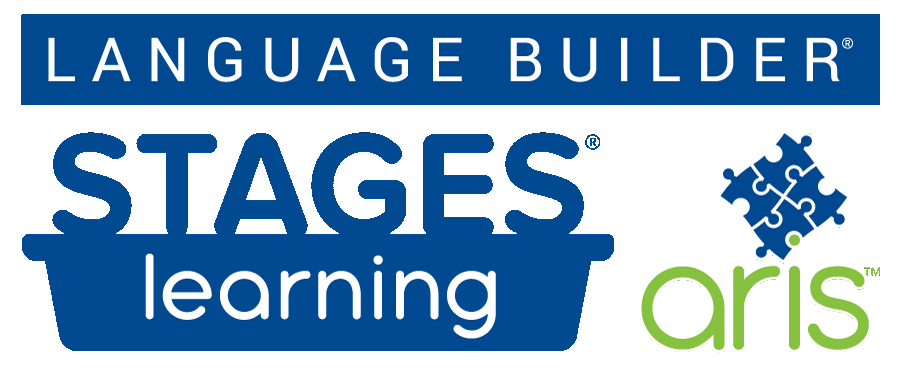
A review of the research, risks, protective factors, and components of addiction, and a preview of treatment options for autistic individuals who struggle with the disease of addiction.1
Recent research suggests there is a link between Autism Spectrum Disorder (ASD) and a tendency towards Substance Use Disorders (SUDs). This article will:
- review the research on autism and SUDs,
- explore risk and protective factors for SUDs,
- outline the components of SUDs,
- and preview treatments specific to autistic persons.
What is a Substance Use Disorder?
The American Psychiatric Association takes a scientific approach to classifying “Substance-Related and Addictive Disorders,” as detailed in the Diagnostic and Statistical Manual of Mental Disorders (DSM-5). Within this rubric are ten classes of drugs: alcohol, caffeine, cannabis, hallucinogens, inhalants, opioids, sedatives, stimulants, tobacco, and other or unknown substances. This section of the DSM-5 includes gambling, a behavioral addiction, which was included in this edition of the DSM for the first time; however, we’ll be focusing mostly on substances.
 With any psychiatric disorder, its existence has to create problems in a person’s life before we diagnose it as a disorder. If a person drinks one beer, it is unlikely to ruin his career, cause liver disease, break up his family, or cause bankruptcy. If a person consistently drinks several beers a day, loses their driver’s license, gets fired from their job, is divorced due to their excessive drinking, and has no money to pay their bills, then there is a clear problem. An individual with a substance abuse problem may devote a great deal of time and attention to pursuing and using the substance despite negative outcomes. It may cause physical illnesses, either directly or indirectly, as well as psychological difficulties. The key factor in diagnosing a Substance Use Disorder is “the individual’s failure to abstain from using the substance despite the difficulty it is causing.”2 An individual’s pursuit and use of the substance can create legal problems, such as stealing to buy drugs, driving while drinking, prostituting oneself for drugs, or selling illegal substances. This level of impairment rarely occurs overnight; it tends to develop over time.
With any psychiatric disorder, its existence has to create problems in a person’s life before we diagnose it as a disorder. If a person drinks one beer, it is unlikely to ruin his career, cause liver disease, break up his family, or cause bankruptcy. If a person consistently drinks several beers a day, loses their driver’s license, gets fired from their job, is divorced due to their excessive drinking, and has no money to pay their bills, then there is a clear problem. An individual with a substance abuse problem may devote a great deal of time and attention to pursuing and using the substance despite negative outcomes. It may cause physical illnesses, either directly or indirectly, as well as psychological difficulties. The key factor in diagnosing a Substance Use Disorder is “the individual’s failure to abstain from using the substance despite the difficulty it is causing.”2 An individual’s pursuit and use of the substance can create legal problems, such as stealing to buy drugs, driving while drinking, prostituting oneself for drugs, or selling illegal substances. This level of impairment rarely occurs overnight; it tends to develop over time.
The Components of SUDs
There are three components to most SUDs:
- tolerance
- intoxication
- withdrawal
With many substances, we may see an increase in the amount of the substance that is needed to get the desired effect; this is called “tolerance.” That one beer that used to relax him is now not enough; it increases to two, then three, and so on. We also see intoxication symptoms during the use of the substance; these vary depending on the substance but may be physiological, psychological, or behavioral. For example, there are no serious intoxication effects from tobacco, but there certainly are with alcohol, such as slurred speech, delayed reaction time, and impaired judgment. There are also withdrawal symptoms with certain substances when the individual ceases using; these may likewise be physiological, behavioral, or psychological. For example, withdrawal from heroin causes a variety of symptoms, such as a severe flu-like sickness; even withdrawal from caffeine can cause headaches. Despite mythology to the contrary, for persons with persistent cannabis use, there are typically withdrawal symptoms. However, there are no known withdrawal symptoms for hallucinogen use. SUDs can range from mild to severe, depending on symptoms and the level of dysfunction.
Why do people abuse substances? Many explanations have been given, such as self-medication, curiosity, peer pressure, genetics, and social learning (watching parents drink or use). How do autistic individuals develop a SUD? Persistent anxiety, loneliness, and other contributing psychiatric disorders have been cited as the main reasons for autistic individuals to abuse alcohol or drugs. Other reasons for drug or alcohol use, reported by autistic individuals, include a reduction in social inhibition, the ability to forget problems and/or to attain peace of mind, to get through the day, or to overcome frustration.3
Finding out the underlying causes for a particular individual to turn to substance use can be a long and challenging process; it is a question that may have multiple answers.

What Does Research Say About ASD and SUDs?
Severely autistic Individuals are unlikely to develop a SUD as they are less likely to have access to problematic substances. Their behavior may be monitored at all times. Thus, research in the last decade has focused mostly on those individuals who can go to school or work, and have some measure of independence outside the home. It is important to note that some persons with SUDs have not been diagnosed as autistic; sometimes the SUD diagnosis and subsequent treatment lead to a better understanding of other psychiatric disorders the individual may be experiencing.
There has historically been an assumption that somehow autistic persons wouldn’t or couldn’t develop an addiction. The opposite is true. Citing a 2017 Swedish study, Szalavitz states:
Overall, an autism diagnosis doubles the risk of addiction, the researchers found. Elevated risk is concentrated among those with an IQ of 100 or above. But across the spectrum, ADHD is a great multiplier of risk: Among those with autism and intellectual disability, having ADHD increases the risk of addiction fourfold; among those with an IQ in the typical range or above, ADHD increases the risk eightfold.4
Szalavitz goes on to share that a psychologist in New York City who works with autistic clients stated that substance abuse issues in this population are common. Further, the psychologist observed generational differences: her adult clients tended to use alcohol, while younger clients used marijuana. Another psychotherapist noted that his autistic clients were often drawn to gambling; the impulsivity often found in ASD fed into gambling addiction.
A meta-analysis of several studies found a prevalence rate of co-occurring ASD and SUDs of between 1.3% to 36%.5 The remarkable width of this range was due to variability among studies and how they were conducted. For example, some studies were conducted with persons institutionalized due to the severity of their symptoms, while others focused on highly functional individuals.
A large study conducted by Huang et.al. in 2021 found a definite connection between ASD and SUDs. Specifically, they found that “the risk was much higher in those who had behavioral comorbidities and those who did not receive psychotropic agents.”6 It is important to note that ASD does not cause SUDs; rather, ASD often generates a dynamic of isolation, marginalization, and potential trauma (for example, being bullied at school). For persons living with loneliness, anxiety, feelings of extreme vulnerability, and access to a specific substance that creates feelings of relaxation or euphoria, repeated use is not surprising. Further, the study by Huang et.al. found that autistic individuals and those with SUD were at greater risk of dying from overdose or disease caused by substance abuse.
Timing: How and When to Look for Symptoms
Parents, teachers, and medical/mental health providers can play a key role in the prevention of the behaviors and experiences that might lead to a SUD. The signs to look for are much the same as those for a non-ASD individual, with some notable exceptions. The key indicator is this: deteriorating functioning in daily life.7 What might this look like? Is the person attending to personal hygiene? Are they functioning as well as usual at work or school? Is the quality of their interpersonal communication worse than before? Are they more withdrawn than before? Are they able to handle their finances as well as before? Are there any physical illnesses present that weren’t there before? Are their daily eating habits the same? Are they sleeping as well as before? Are they avoiding certain questions about how they spend their time away from home (after work, after school)? Is there an increase in angry outbursts, with little provocation?
Individual symptoms are one component of a thorough assessment; another element is to identify risk factors that may be present in the environment that could contribute to the development of a SUD. Here are some of the Risk Factors outlined by Ressel et.al.:
- Exposure to adverse childhood experiences, i.e. trauma, neglect, abuse 8
- Genetics (i.e., family history of substance abuse disorders)
- Psychological states, such as vulnerability
- Intellectual disability
- ADHD or other impulse-control disorder
- Anxiety
- Social difficulties, such as interaction deficits
- Maladaptive coping style
- Disruptive behavior in childhood
- Family history of substance abuse
- Early onset of cigarette smoking
- Lack of structure
- Late ASD diagnosis
Are any risk factors or symptoms evident? What then? An editorial in the 2021 issue of JAMA Pediatrics suggests that screening adolescents for SUDs is essential; and for adolescents with any psychiatric diagnosis, it is a priority.9 Screening pre-teens may also be wise. With screening comes the possibility of treatment and subsequent positive outcomes.

Treatment: How to Address Symptoms
One way to address the symptoms of a developing SUD is to assess the individual’s Protective Factors -- those elements of the environment that support and stabilize the individual -- and prevent the development of a full-blown SUD. Some of the Protective Factors outlined by Ressel et.al. and based on research from multiple studies are:
- Lack of access to problematic substances10
- Timely diagnosis of ASD
- Friends
- Co-occurring diagnosis of Intellectual Disability
- Low sensation-seeking
That first factor is key. It can fairly be stated, for example, that a person with a genetic predisposition to alcohol abuse will not develop an alcohol abuse disorder if he never drinks alcohol. Each family unit can consider what they might be able to do to prevent access to substances of abuse. Certainly instituting protective factors is important; equally so is reducing or preventing risk factors wherever possible. But if a SUD seems to be developing, then seeking a professional assessment and treatment recommendation is the next step.
There are many screening instruments used by medical and mental health providers to determine if a SUD is present. Following a diagnosis of SUD, the provider will recommend treatment. The typical treatment protocol for SUDs includes a heavy reliance on group psychotherapy, where participants are expected and required to share personal information and give feedback to other participants. Given the communication and social interaction difficulties experienced by many autistic persons, this is unlikely to be a successful treatment regimen. Likewise, groups such as AA (Alcoholics Anonymous) and NA (Narcotics Anonymous) focus on group interaction, and may not be effective for autistic individuals.
New approaches must be developed to address the unique needs of an autistic individual with both ASD and SUD. A preliminary study11 found that an extensive regimen of Cognitive-Behavioral Therapy was helpful in a small population of autistic individuals with SUDs; however, the study was too limited to be able to conclude that this is truly an effective treatment. Interestingly, however, the study protocol also provided enhanced education about ASD, and supervision to psychotherapists in the study, which may represent a major improvement in this treatment approach.
Conclusion
A SUD need not be permanent, nor ultimately destructive to an individual and family. Prevention is best; but if symptoms are present, then timely screening and diagnosis are essential, and treatment is necessary to conquer the SUD. Individuals can and do recover, and lead functional, successful lives in recovery.
Let us know if you have additional ideas about treatment for SUDs for autistic individuals.
References and Notes
1. While 'alcoholism' and 'addiction' are commonly used terms, in this article we'll be using the specific diagnostic language used in the DSM-5.
2. American Psychiatric Association (2013). Diagnostic and Statistical Manual of Mental Disorders, 5th edition, Arlington VA, p. 483
3. Helverschou SB, Brunvold AR, Arnevik EA. Treating Patients With Co-occurring Autism Spectrum Disorder and Substance Use Disorder: A Clinical Explorative Study. Subst Abuse. 2019;13:1178221819843291. Published 2019 Apr 17. doi:10.1177/1178221819843291
4. Szalavitz, M and Spectrum. The Hidden Link between Autism and Addiction. The Atlantic. 2017/03. Retrieved July 6, 2021, from https://www.theatlantic.com/health/archive/2017/03/autism-and-addiction/518289/.
5. Ressel, M., Thompson, B., Poulin, M., Normand, C., Fisher, M., Couture, G., and Iarocci. G. Systematic review of risk and protective factors associated with substance use and abuse in individuals with autism spectrum disorders. Autism 2020, Vol. 24(4) 899–918. Sage Publications.
6. Huang J, Yang F, Chien W, et al. Risk of Substance Use Disorder and Its Associations With Comorbidities and Psychotropic Agents in Patients With Autism. JAMA Pediatr. 2021;175(2):e205371. doi:10.1001/jamapediatrics.2020.5371
7. Op cit, Ressel, et al.
8. Ibid.
9. Anderson SAR, Catallozzi M. Autism Spectrum Disorder and the Risk of Substance Use Disorder: A Call for Targeted Screening and Prevention in Adolescents. JAMA Pediatr. 2021;175(2):e205376. doi:10.1001/jamapediatrics.2020.5376
10. Op Cit. Ressel et al.
11. Helverschou SB, Brunvold AR, Arnevik EA. Treating Patients With Co-occurring Autism Spectrum Disorder and Substance Use Disorder: A Clinical Explorative Study. Subst Abuse. 2019;13:1178221819843291. Published 2019 Apr 17. doi:10.1177/1178221819843291





